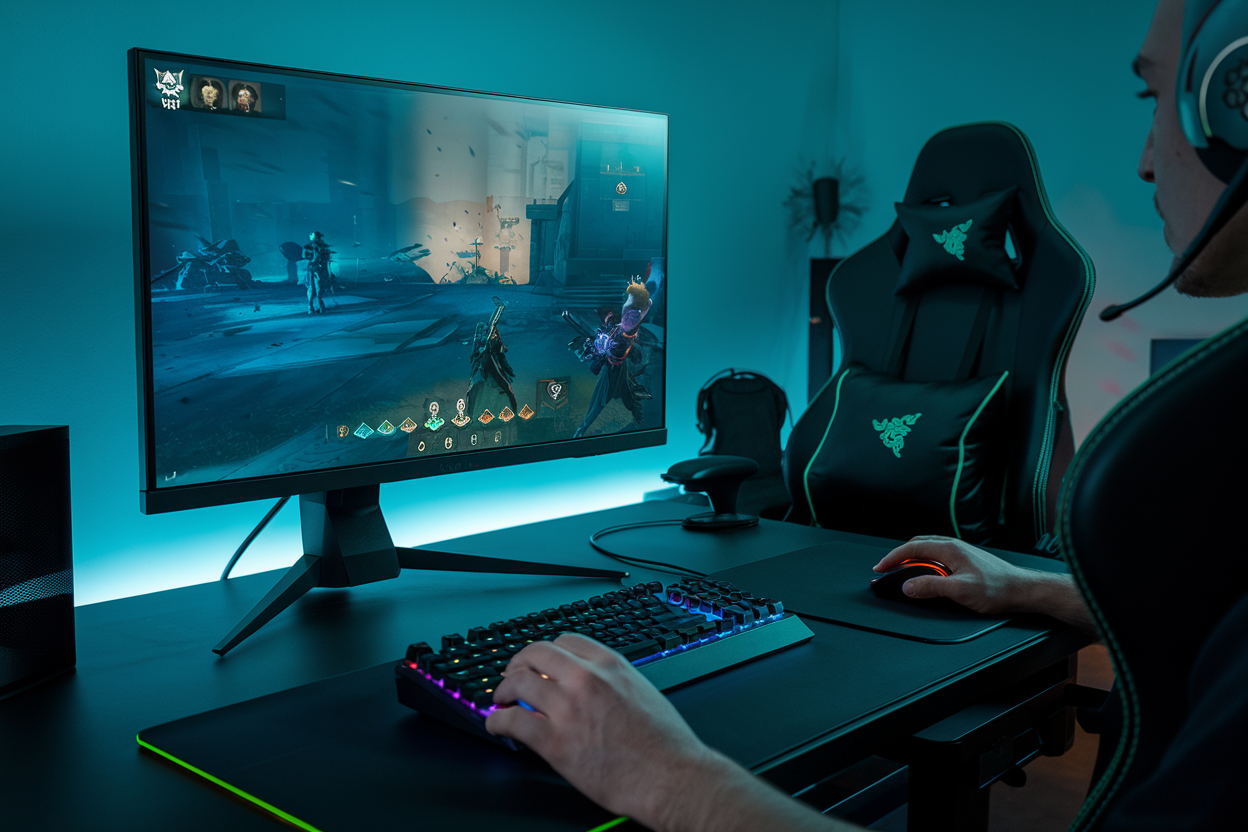BEST GAME FOR KIDS
Importance of creativity in child development
Creativity is more than just an enjoyable pastime for children; It is an important part of their growth. When kids engage in creative play, they learn to think outside the box, solve problems and express themselves in unique ways.
These skills are important not only for academic success but also for their overall emotional and social development. Creative activities help children explore new ideas, develop fine motor skills and build confidence as they bring their ideas to life.

Screen time issues
In today’s digital age, screens are everywhere. From smartphones and tablets to TVs and computers, kids are spending more time in front of screens than ever. While technology has its benefits, too much screen time can hinder a child’s ability to engage in creative play.
When kids are glued to screens, they often passively consume content, leaving little room for imagination or problem solving. This over-reliance on screens can limit their opportunities to explore, create and think independently.
Objective of the essay
Acknowledging the need for more creative, screen-free playtime, this article aims to introduce parents and caregivers to a variety of screen-free games that can stimulate a child’s imagination. These games are designed to be fun and engaging as well as encourage creativity By incorporating these activities into daily routines, parents can help their children develop important creative skills that will benefit them throughout life.
Screen-free play is crucial for developing creativity and cognitive skills.
Screen-free play isn’t just a break from technology; It is essential for boosting creativity, enhancing problem-solving abilities and helping children’s cognitive development. By engaging in activities that don’t involve screens, kids can develop skills that are the foundation for their growth and future success.
Encourages imagination and creativity
When children engage in screen-free play, they are free to explore their imaginations without the constraints of prescriptive digital content. Unlike video games or apps that often dictate the experience, screen-free activities such as building with blocks, drawing or pretending to allow children to discover their own worlds, stories and characters. Open-ended play like this encourages creative thinking, as children must come up with their own ideas and solutions. Over time, these experiences help develop a child’s ability to think outside the box and tackle challenges with a creative mindset.
Improves problem solving skills
Screen-free play also plays an important role in improving problem-solving skills. Activities such as puzzles, board games, or even a simple game of building a fort require children to think critically and make decisions. These tasks often involve trial and error, strategic thinking, and the ability to adapt to new challenges—all key elements of problem solving. By regularly engaging in such activities, children learn how to approach problems systematically, consider different solutions, and work through challenges independently.
Promotes social interaction and teamwork
In a world where digital communication is becoming more common, screen-free play offers children a valuable opportunity to develop social skills Games that involve teamwork, such as group sports, board games or collaborative building projects, teach children how to communicate, share and work together towards a common goal. These experiences are crucial for developing empathy, understanding others’ perspectives, and learning how to navigate social dynamics—skills that are not only important in childhood but essential throughout life.
Effects on cognitive development
Finally, screen-free play has a profound influence on cognitive development. Engaging in activities that require focus, memory and planning, such as playing with puzzles or building models, helps strengthen the brain’s neural connections. This type of play stimulates areas of the brain responsible for critical thinking, spatial awareness and executive function – skills that are essential for academic success and everyday decision making. Additionally, by reducing screen time, children can avoid the extra stimulation that often comes with digital media, allowing their brains to rest and develop naturally.
In summary, while technology has a place in a child’s life, balancing screen time with screen-free play is critical to raising a well-rounded, creative and cognitively healthy child.
The best screen-free games for kids
The best screen-free games for kids are those that not only entertain but also boost creativity From building blocks to outdoor scavenger hunts, these activities encourage imaginative thinking, problem solving and social interaction, ideal for children’s cognitive and emotional development.
Building blocks (eg, Lego, wooden blocks)

How it boosts creativity: Building blocks are a classic tool for creative play. When children create different shapes, structures or even entire worlds, they engage their imaginations and improve spatial awareness. This activity encourages them to think critically about how pieces fit together and explore the endless possibilities.
Suitable Age Range: Building blocks are versatile and can be enjoyed by children of different ages. Younger kids can start with simple stacking, while older kids can tackle more complex designs, making it a game that grows with them.
Arts and Crafts Kits

How it boosts creativity: Arts and crafts kits allow kids to express themselves through drawing, painting and making. Whether they’re making handmade cards, designing a piece of jewelry, or making a paper model, these activities encourage kids to think outside the box and develop their artistic skills. It is an open way to nurture their unique creativity.
Appropriate Age Range: These kits can be customized based on the child’s interest and skill level. Younger kids can enjoy simple activities like coloring or making basic crafts, while older kids can dive into more complex projects that challenge their fine motor skills and creativity.
Role playing games (dress-up, puppet show)

How it boosts creativity: Role-playing games allow children to step into different characters and scenarios, stimulating imaginative storytelling and social interaction. Whether they’re pretending to be a superhero, a doctor or a puppet show, these games help them explore different roles and narratives, which are essential for developing empathy and communication skills.
Suitable Age Range: Role playing games are especially popular with preschoolers and younger children, who naturally lean toward imaginative play. However, older kids can enjoy these activities as well, especially when the situations become more complex and cooperative.
Puzzle games (jigsaw puzzle, tangram)


How it boosts creativity: Puzzles are more than just a fun challenge; They are a great way to improve problem solving skills and spatial reasoning. By figuring out how different pieces fit together, children learn to think critically and creatively, often finding unique solutions to complete the puzzle. It is a mental exercise that also improves endurance and concentration.
Suitable Age Range: The puzzles come in different levels of difficulty, making them suitable for kids of all ages. Younger children can start with simple, larger pieces, while older children can solve more complex puzzles that require advanced thinking.
Outdoor Games (Scavenger Hunts, Nature Exploration)

How it boosts creativity: Outdoor games like scavenger hunts and nature exploration are great for engaging kids with the world around them. These activities foster creativity by encouraging children to observe, explore and interact with their environment in new and imaginative ways.
Whether they are looking for hidden treasures or discovering different types of plants, these games instill a sense of curiosity and adventure.
Suitable Age Range: Outdoor games are ideal for all ages, as they can be tailored to the interests and abilities of the children involved. From simple nature walks for the youngest explorers to more complex scavenger hunts for older kids, the possibilities are endless.
By incorporating these screen-free games into their playtime, children can develop their creativity while having fun, making these activities a valuable part of their growth and learning journey.
Long-lasting effects of screen-free games on creativity
Screen-free games are a powerful tool for fostering children’s creativity. Unlike digital entertainment, these games encourage kids to use their imaginations, solve problems, and interact with the world around them in meaningful ways.
By focusing on activities that require active participation rather than passive consumption, screen-free games help develop critical thinking, enhance cognitive skills, and promote social interaction.
Benefits Recap: Why Screen-Free Games Matter
The main advantage of screen-free games is their ability to boost creativity. When children engage in activities like building, crafting, or role-playing with blocks, they’re not just having fun—they’re learning to think creatively and solve problems in innovative ways.
These games challenge them to come up with their own stories, designs and solutions, which can translate into stronger problem-solving abilities and better adaptability in real-life situations.
Additionally, screen-free games often require more social interaction than screen-based games. Whether it’s playing a board game, engaging in a scavenger hunt, or putting on a puppet show, these activities encourage children to communicate, collaborate, and share ideas. It not only builds creativity but also improves social skills and emotional intelligence.
Call to Action: Prioritize screen-free play
If you’re a parent, prioritizing screen-free play can have a significant positive impact on your child’s development. Start by introducing a few screen-free games into their routine and gradually increase the time spent on these activities. Create a space in your home dedicated to creative play, filled with materials like building blocks, art supplies and puzzles. Encourage your child to spend more time engaging with these materials and participate with them when you can model creative thinking and problem-solving.
Final thoughts: The long-term benefits of creative play
In the long run, encouraging screen-free play isn’t just about limiting screen time—it’s about investing in your child’s future. The skills they develop through creative play, such as critical thinking, creativity and social interaction, are essential for success in school, work and life.
By making screen-free games a regular part of your child’s routine, you’re helping them build a foundation for lifelong learning and creativity. The impact of these activities will extend beyond their childhood, shaping them into well-rounded, adaptable individuals ready to take on future challenges.
If you want to get any other problem solved, please stay tuned with us by subscribing with your email.

























